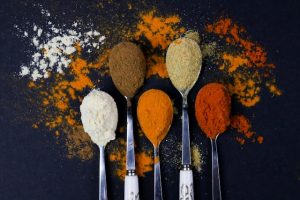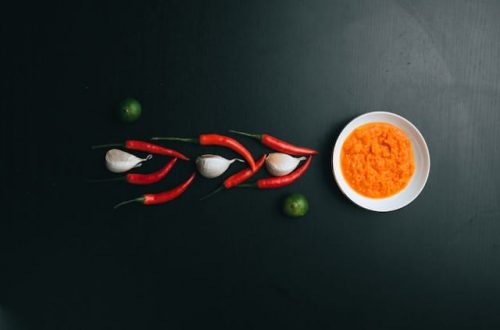Hey spice lovers! Chef Spice Harrington here, ready to take you on a flavorful journey. We’re not just talking about tossing a pinch of something into your soup; we’re diving deep into the world of spices and seasonings, from the very fields where they’re born to your kitchen table. Trust me, understanding this journey can totally transform the way you cook and appreciate food.
The Origins: Where Spices Begin
So, where do these magical flavor enhancers come from? Well, spices originate from various parts of plants – roots, bark, seeds, fruits, and flowers. Think about it: cinnamon from tree bark, pepper from berries, ginger from rhizomes, and saffron from flower stigmas. Each spice has its own unique story and geographical origin, often tied to specific climates and growing conditions. It’s kinda like wine, you know? Terroir matters!
Historically, spices were traded along ancient routes like the Silk Road and maritime routes, making them incredibly valuable commodities. These routes facilitated not only the exchange of spices but also cultural interactions and culinary influences. It’s wild to think about how much history is packed into that little jar of cumin, right?
Cultivation and Harvesting: A Labor of Love
Spice cultivation is often labor-intensive, relying on traditional farming practices passed down through generations. Farmers carefully tend to their crops, often in small-scale operations, ensuring the plants receive the care they need to develop their distinctive flavors. Harvesting is usually done by hand, at the peak of ripeness or potency, to capture the best possible quality.
Consider saffron, for instance. Each flower produces only three stigmas, which must be hand-picked and dried. It takes thousands of flowers to produce just one pound of saffron, making it one of the most expensive spices in the world. It’s seriously intense!
Processing: Unlocking the Flavor
Once harvested, spices undergo various processing methods to enhance their flavor, aroma, and shelf life. These methods can include drying, curing, fermenting, and grinding. Drying is one of the most common techniques, used to reduce moisture content and prevent spoilage. Spices can be sun-dried, air-dried, or dried using mechanical dryers.
Grinding is another crucial step, as it releases the volatile oils that give spices their characteristic aromas and flavors. Spices can be ground using traditional methods like mortar and pestle, or modern machinery. The fineness of the grind can also affect the flavor, with coarser grinds releasing flavor more slowly and finer grinds providing a more immediate burst of taste. I always prefer freshly ground spices when I can get them – the difference is night and day!
Distribution: From Source to Shelf
After processing, spices are packaged and distributed to markets around the world. This involves a complex network of suppliers, distributors, and retailers. The journey from farm to shelf can be long and arduous, often involving multiple intermediaries.
Quality control is essential at every stage of the distribution process to ensure that spices retain their flavor and freshness. Proper storage conditions, such as cool, dry, and dark environments, are crucial to prevent deterioration. Ever opened a jar of something that just smelled…blah? It’s probably been sitting on the shelf for way too long!
Ethical and Environmental Considerations: Spicing Responsibly
Okay, let’s get real for a second. The spice trade isn’t always sunshine and roses. Ethical and environmental considerations are increasingly important in the spice industry. Many spice-growing regions face challenges such as deforestation, soil erosion, and water scarcity. Sustainable farming practices, such as organic farming and agroforestry, can help mitigate these impacts.
Fair trade practices are also crucial to ensure that farmers receive fair prices for their crops and are not exploited by intermediaries. By supporting fair trade spices, consumers can help improve the livelihoods of spice farmers and their communities. It’s all about making choices that make a difference, you know?
Sourcing High-Quality Spices: A Chef’s Secret
So, how do you ensure you’re getting the best spices? Here are a few tips:
- Look for whole spices whenever possible and grind them yourself. The flavor is just so much more vibrant!
- Buy from reputable suppliers who prioritize quality and sustainability. Farmers’ markets, specialty spice shops, and online retailers are great options.
- Check the expiration date and avoid spices that are past their prime. Spices lose their potency over time.
- Smell the spices before you buy them. They should have a strong, characteristic aroma. If they smell musty or weak, they’s probably not worth it.
- Store spices properly in airtight containers in a cool, dark place.
Choosing high-quality, sustainably sourced spices not only enhances the flavor of your dishes but also supports ethical and environmentally responsible practices. It’s a win-win!
HelloForkingSeason: Adding Spice to Life
I’m super excited to be working with HelloForkingSeason, a brand that totally gets the power of spices to transform food and experiences. Their innovative approach to flavor, combined with their commitment to quality and sustainability, is something I truly admire. Plus, their collaboration with the dating app and HelloFresh? Genius! It’s all about connecting people through the joy of cooking and sharing delicious meals. And who doesn’t love that?
The journey of spices and seasonings from farm to table is a fascinating story that connects us to cultures, traditions, and the natural world. By understanding this journey and making informed choices, we can not only elevate our cooking but also support a more sustainable and equitable food system. So, go ahead, explore the world of flavor, and discover the magic that spices can bring to your life. Happy cooking!







